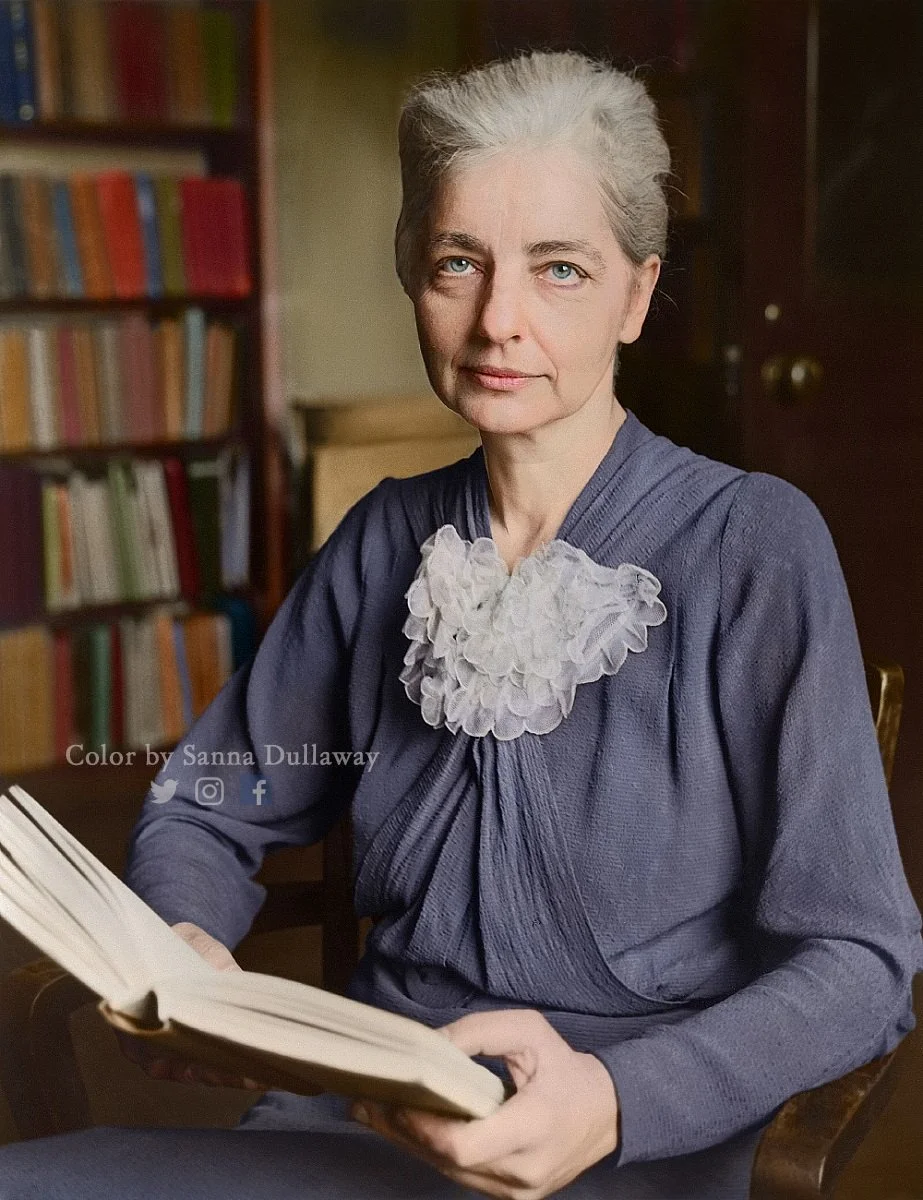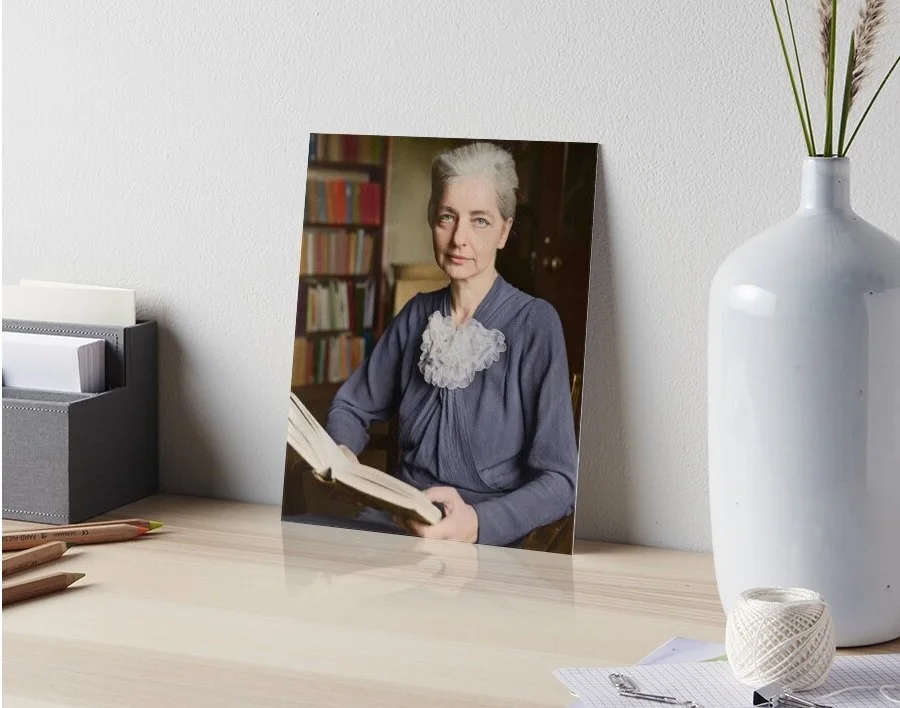Ruth Benedict, anthropologist and folklorist, in 1937
Available on my print shop on Redbubble.
Licencing questions? Email me!
Photo by NYWT&S staff (Library of Congress)
Benedict received her bachelor’s degree from Vassar College and her PhD from Columbia University in 1923, where she found writing as her way of expressing herself. She was nicknamed an “intellectual radical” by her classmates. She later studied under and worked for the world-renowned anthropologist Franz Boas.
Benedict was president of the American Anthropological Association and also an important member of the American Folklore Society - she became the first woman to be a leader of an academic profession.
She can be viewed as a transitional figure in her field by redirecting both anthropology and folklore away from the limited confines of culture-trait diffusion studies by combining anthropology with sociology, psychology and philosophy. She studied the relationships between personality, art, language, and culture and insisted that no trait existed in isolation or self-sufficiency – that all things connect together, a theory that she championed in her 1934 book Patterns of Culture.
In 1946 she wrote The Chrysanthemum and the Sword: Patterns of Japanese Culture. It was written at the invitation of the U.S. Office of War Information, in order to understand and predict the behavior of the Japanese in World War II by reference to a series of contradictions in traditional culture.
Like several other wartime studies of Japan and Germany, this book is an instance of "culture at a distance", the study of a culture through its literature, newspaper clippings, films, and recordings, as well as extensive interviews with German-Americans or Japanese-Americans. The techniques were necessitated by anthropologists' inability to visit Nazi Germany or wartime Japan.
The book was influential in shaping American ideas about Japanese culture during the occupation of Japan, and popularized the distinction between guilt cultures and shame cultures.
One of Benedict’s colleagues, and closest friend, was Margaret Mead – an influential and famous anthropologist. Her reports detailing the attitudes towards sex in South Pacific and Southeast Asian traditional cultures influenced the 1960s sexual revolution.
Ruth and Margaret got along well with their shared passion for each other's work and the sense of pride that they felt in being successful working women while that was still uncommon. They were frequently known to critique each other's work; they entered into a companionship that began through their work, but during its early period, it also had an erotic character.
Margaret and Ruth.
Both Benedict and Mead wanted to dislodge stereotypes about women that were widely believed during their time and to show people that working women could also be successful even though working society was seen as a man's world. In her memoir about her parents, ‘With a Daughter's Eye’, Mead's daughter strongly implies that the relationship between Benedict and Mead was partly sexual.
Correspondence between the two.
You can read excerpts of some of the letters on "the marginalian" blog post here: https://www.themarginalian.org/2013/10/23/margaret-mead-ruth-benedict-love-letters/
To Cherish the Life of the World: The Selected Letters of Margaret Mead
Available on my print shop on Redbubble.
Licencing questions? Email me!







